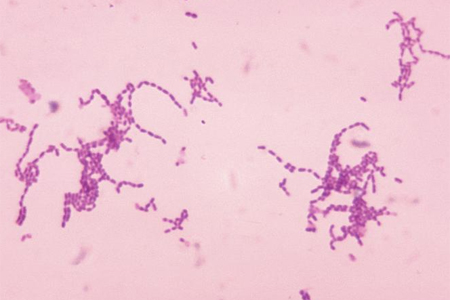Summary
Definition
História e exame físico
Principais fatores diagnósticos
- fever or low body temperature
- tachypnea
- tachycardia
- bradycardia (neonates and infants)
- altered mental state or behavior
- decreased peripheral perfusion
- change in usual pattern of activity or feeding in a neonate
- dry diapers/decreased urine output
- mottling of the skin, ashen appearance, cyanosis
- low oxygen saturation
- vasoplegia
- nonblanching purpuric rash
Outros fatores diagnósticos
- hypotension
- specific focal signs and symptoms reflecting underlying pathology
Fatores de risco
- immunodeficiency
- comorbidities
- male sex
- younger age (especially neonates)
- perinatal risk factors for infection (neonates)
- healthcare-associated factors (neonates)
- recent surgery or other invasive procedures
- breached skin integrity
Investigações diagnósticas
Primeiras investigações a serem solicitadas
- CBC with differential
- serum glucose
- blood culture
- urinalysis
- urine culture
- blood gases
- serum lactate
- serum electrolytes
- serum creatinine
- LFTs
- coagulation studies
- C-reactive protein (CRP)
- chest x-ray
Investigações a serem consideradas
- lumbar puncture
- meningococcal polymerase chain reaction analysis
- bronchoalveolar lavage culture
- herpes simplex virus (HSV) polymerase chain reaction (blood and cerebrospinal fluid)
- CT chest
- Abdominal ultrasound
- Abdominal CT
- serum procalcitonin
Novos exames
- emerging biomarkers
- PhenoTest™ BC Kit
Algoritmo de tratamento
presumed or confirmed sepsis
Colaboradores
Autores
Akash Deep, MD, FRCPCH
Director and Professor of Paediatric Critical Care
Paediatric Intensive Care Unit
King’s College Hospital
London
UK
Declarações
AD declares that he is an advisory board member for Mallonckrodt.
Chris Duncan, BMBS, BMedSci, MRCP, FFICM, FEWM, RMP, PGCert
ST7 Intensive Care Medicine
Barts Health NHS Trust
London
UK
Declarações
CD declares that he has no competing interests.
Agradecimentos
Dr Akash Deep and Dr Chris Duncan would like to gratefully acknowledge Dr Jeremy Tong and Dr Adrian Plunkett, previous contributors to this topic.
Declarações
JT and AP are authors involved in the Pediatric Sepsis Six initiative, cited in this topic.
Revisores
Saul N. Faust, MA, MBBS, FRCPCH, PhD, FHEA
Professor of Paediatric Immunology & Infectious Diseases
Director, NIHR Wellcome Trust Clinical Research Facility
University of Southampton
Southampton
UK
Declarações
SNF declares that he has no competing interests.
Mohan Pammi, MBBS, MD, MRCPCH
Assistant Professor
Texas Children's Hospital and Baylor College of Medicine
Houston
TX
Declarações
MP declares that he has no competing interests.
Jerry J. Zimmerman, MD, PhD
Faculty, Pediatric Critical Care Medicine
Seattle Children's Hospital
University of Washington School of Medicine
Seattle
WA
Declarações
JJZ receives research grant support from NIH/NICHD and ImmuneXpress; travel reimbursement from the Society of Critical Care Medicine to attend board meetings; and royalties from Elsevier for action as a co-editor for the textbook Pediatric Critical Care.
Créditos aos pareceristas
Os tópicos do BMJ Best Practice são constantemente atualizados, seguindo os desenvolvimentos das evidências e das diretrizes. Os pareceristas aqui listados revisaram o conteúdo pelo menos uma vez durante a história do tópico.
Declarações
As afiliações e declarações dos pareceristas referem--se ao momento da revisão.
Referências
Principais artigos
Goldstein B, Giroir B, Randolph A; International Consensus Conference on Pediatric Sepsis. International pediatric sepsis consensus conference: definitions for sepsis and organ dysfunction in pediatrics. Pediatr Crit Care Med. 2005 Jan;6(1):2-8. Resumo
Schlapbach LJ, Watson RS, Sorce LR, et al. International consensus criteria for pediatric sepsis and septic shock. JAMA. 2024 Feb 27;331(8):665-74. Resumo
Weiss SL, Peters MJ, Alhazzani W, et al. Surviving Sepsis Campaign international guidelines for the management of septic shock and sepsis-associated organ dysfunction in children. Pediatr Crit Care Med. 2020 Feb;21(2):e52-e106.Texto completo Resumo
Davis AL, Carcillo JA, Aneja RK, et al. American College of Critical Care Medicine clinical practice parameters for hemodynamic support of pediatric and neonatal septic shock. Crit Care Med. 2017 Jun;45(6):1061-93.Texto completo Resumo
National Institute for Health and Care Excellence. Fever in under 5s: assessment and initial management. Nov 2021 [internet publication].Texto completo
Artigos de referência
Uma lista completa das fontes referenciadas neste tópico está disponível para os usuários com acesso total ao BMJ Best Practice.

Diagnósticos diferenciais
- Coronavirus disease 2019 (COVID-19)
- Pediatric inflammatory multisystem syndrome
- Congenital heart disease
Mais Diagnósticos diferenciaisDiretrizes
- Sepsis: recognition, diagnosis and early management
- American College of Radiology appropriateness criteria for imaging for diagnosis of sepsis
Mais DiretrizesFolhetos informativos para os pacientes
Sepsis in children
Pneumococcal vaccine in babies and children
More Folhetos informativos para os pacientesLog in or subscribe to access all of BMJ Best Practice
Use of this content is subject to our disclaimer